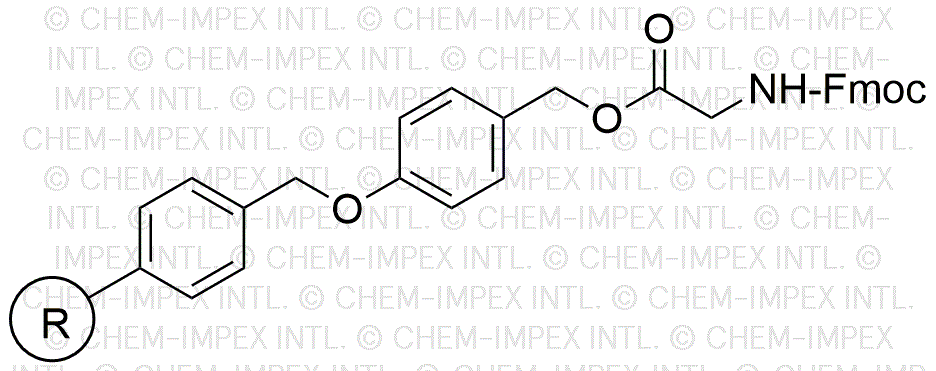Fmoc-L-glycine 4-alkoxybenzyl alcohol is widely utilized in research focused on:
- Peptide Synthesis: This compound serves as a key building block in the synthesis of peptides, allowing researchers to create specific sequences for studying protein functions and interactions.
- Drug Development: Its unique structure enables the design of novel pharmaceuticals, particularly in the development of targeted therapies where precision is crucial.
- Bioconjugation: The compound is effective in bioconjugation processes, facilitating the attachment of biomolecules to surfaces or other molecules, which is essential in diagnostics and therapeutic applications.
- Research in Neuroscience: It is used in studies related to neurotransmitter systems, helping scientists understand the role of specific peptides in brain function and behavior.
- Material Science: The compound can be incorporated into polymer systems, enhancing properties such as biocompatibility and functionality for applications in medical devices.
General Information
Properties
Safety and Regulations
Applications
Fmoc-L-glycine 4-alkoxybenzyl alcohol is widely utilized in research focused on:
- Peptide Synthesis: This compound serves as a key building block in the synthesis of peptides, allowing researchers to create specific sequences for studying protein functions and interactions.
- Drug Development: Its unique structure enables the design of novel pharmaceuticals, particularly in the development of targeted therapies where precision is crucial.
- Bioconjugation: The compound is effective in bioconjugation processes, facilitating the attachment of biomolecules to surfaces or other molecules, which is essential in diagnostics and therapeutic applications.
- Research in Neuroscience: It is used in studies related to neurotransmitter systems, helping scientists understand the role of specific peptides in brain function and behavior.
- Material Science: The compound can be incorporated into polymer systems, enhancing properties such as biocompatibility and functionality for applications in medical devices.
Documents
Safety Data Sheets (SDS)
The SDS provides comprehensive safety information on handling, storage, and disposal of the product.
Product Specification (PS)
The PS provides a comprehensive breakdown of the product’s properties, including chemical composition, physical state, purity, and storage requirements. It also details acceptable quality ranges and the product's intended applications.
Certificates of Analysis (COA)
Search for Certificates of Analysis (COA) by entering the products Lot Number. Lot and Batch Numbers can be found on a product’s label following the words ‘Lot’ or ‘Batch’.
Número de catálogo
Número de lote/lote
Certificates Of Origin (COO)
This COO confirms the country where the product was manufactured, and also details the materials and components used in it and whether it is derived from natural, synthetic, or other specific sources. This certificate may be required for customs, trade, and regulatory compliance.
Número de catálogo
Número de lote/lote
Safety Data Sheets (SDS)
The SDS provides comprehensive safety information on handling, storage, and disposal of the product.
DownloadProduct Specification (PS)
The PS provides a comprehensive breakdown of the product’s properties, including chemical composition, physical state, purity, and storage requirements. It also details acceptable quality ranges and the product's intended applications.
DownloadCertificates of Analysis (COA)
Search for Certificates of Analysis (COA) by entering the products Lot Number. Lot and Batch Numbers can be found on a product’s label following the words ‘Lot’ or ‘Batch’.
Número de catálogo
Número de lote/lote
Certificates Of Origin (COO)
This COO confirms the country where the product was manufactured, and also details the materials and components used in it and whether it is derived from natural, synthetic, or other specific sources. This certificate may be required for customs, trade, and regulatory compliance.

